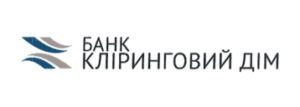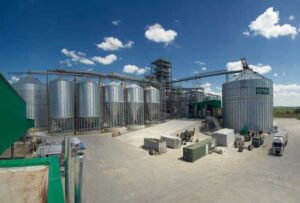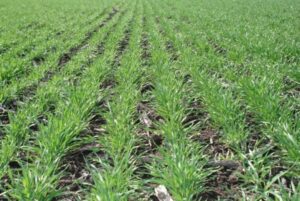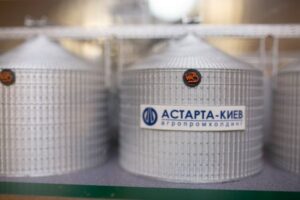
Bank Clearing House has bought back 5.2727% of shares from Ivan Fursin, as a result of which its share has decreased from 6.8773% to 1.6046%, according to the information in the disclosure system of the National Securities and Stock Market Commission (NSSMC).
It is specified that the shares were bought back on May 17 this year.
As reported, Clearing House Bank planned to buy back 2,540 ordinary registered shares, or 5.2727% of the authorized capital.
According to the National Bank of Ukraine (NBU), as of January 1, 2024, its shareholders were: Yulia Lyovochkina – 63.4068%, Ivan Fursin – 16.7791% (6.8773% direct participation and 9.9018% indirectly through Vistaki Ventures Limited), Ihor Voronin – 9.7855%, Fabian Bonneleim – 6.4642%, Ng Ching Yu – 2.5408%, Yuriy Boyko – 1.0172% and Oleksandr Danchenko – 0.0005%.
As of April 1, 2024, in terms of total assets, Clearing House Bank ranked 34th (UAH 5.48 billion) among 63 banks operating in the country. Last year, the bank increased its net profit to UAH 143.56 million from UAH 83.58 million in 2022, and its assets increased to UAH 5.5 billion from UAH 5.2 billion, according to the annual report.

Bank Clearing House may buy back 2,540 ordinary registered shares, or 5.2727% of the authorized capital, according to information in the disclosure system of the National Securities and Stock Market Commission (NSSMC).
According to the announcement, the relevant issue will be considered at the general meeting of shareholders on April 29 this year.
The agenda stipulates that the shares are to be repurchased at the market value determined by the appraiser Garant-Expertise LLC.
According to the bank, as of January 1 this year, its shareholders were: Yulia Lyovochkina – 63.4068%, Ivan Fursin – 16.7791%, Ihor Voronin – 9.7855%, Fabian Bonneleim – 6.4642%, Ng Ching Yu – 2.5408%, Yuriy Boyko – 1.0172% and Oleksandr Danchenko – 0.0005%.
As of February 1, 2024, in terms of total assets, Clearing House Bank ranked 34th (UAH 5.74 billion) among 63 banks operating in the country. Its authorized capital amounted to UAH 510.4 million, and its equity capital was UAH 1 billion 71.4 million.
Last year, the bank increased its net profit to UAH 143.56 million from UAH 83.58 million in 2022, and its assets grew to UAH 6.09 billion from UAH 5.85 billion.

On Wednesday, the share price of Kernel, one of Ukraine’s largest agricultural groups, jumped by 26.7% on the Warsaw Stock Exchange, reaching the highest trading volume since mid-December last year.
According to the Warsaw Stock Exchange’s website, the shares rose from PLN10.49 to PLN13.30 at the opening of trading, with some deals being made at PLN13.90 per share.
As of 17:00 in Warsaw, the turnover reached 283.62 thousand shares, and the value of the transactions amounted to 3.50 million ($877 thousand at the current exchange rate).
Minority shareholders, who have united against the delisting plans and the earlier additional share issue, suggest that such activity may be related to the purchase of shares by the majority shareholder and the company’s CEO, Andrey Verevsky, to reach the 95% threshold and demand their mandatory redemption. However, there is no official confirmation of this information.
As reported, Verevsky’s Namsen increased its stake from 41.3% to 74.05%, or 62 million 222.46 thousand shares, as part of the share buyback announced in March 2023 for the further delisting of the agricultural holding from the Warsaw Stock Exchange: On May 12, Namsen bought back 30 million 248,449 thousand shares at a price of PLN18.5 per share (approximately $4.47 at the then exchange rate), which brought the total buyout price to approximately $136.1 million, while the company’s 2007 IPO was held at a price of PLN24.
During the over-allotment initiated by Wierewski in August 2023 among qualified investor shareholders, Namsen acquired another 212 million 634,916 thousand shares for a total over-allotment of 216 million shares. The purchase price was $0.2777 per share, for a total value of approximately $59.1 million, and the transaction was completed on September 1. The over-allotment shares are held in registered form and will not be admitted to trading on any stock exchange, Kernel said.
After the announcement on August 22, 2023, of the start of the pre-displacement and until September 15, the share price fell from PLN13.74 to a historic low of PLN6.34.
Subsequently, in November, Namsen acquired another 1.2 million shares in the company, or 0.4% of the total number, at a price of $1.875 per share, which, including treasury shares, increased Verevsky’s stake to 94.37% of the voting shares.
On March 21, Kernel’s shareholders’ meeting will consider reducing the company’s share capital by canceling 2.2%, or 6.602 million treasury shares owned by its subsidiary Etrecom Investments Limited. It is specified that as a result, the number of shares will be reduced to 293 million 429.23 thousand, and the share capital – to $7 million 748.29 thousand. In case of cancellation of treasury shares, the share of CEO Verevsky through his Namsen Limited will increase from 92.30% to 94.37%.
Minority shareholders have announced plans to challenge the move with the Luxembourg regulator and in the courts. On November 17, private investor Pavlo Boyko said that a group of investors was working with law firm Brucher Thieltgen & Partners. According to him, more than a thousand investors from all over the world have united, “from the smallest to 1 million shares.” The court will preliminarily consider the first lawsuit on March 18.
Before the war, Kernel was the world’s largest producer of sunflower oil (about 7% of global production) and the world’s largest exporter (about 12%). It is one of the largest producers and sellers of bottled oil in Ukraine. In addition, it is engaged in the cultivation and sale of agricultural products.
Kernel’s net profit for FY2023 amounted to $299 million, while the company ended the previous year with a net loss of $41 million. The agricultural holding’s revenue for FY2023 decreased by 35% to $3.455 billion, but EBITDA increased 2.5 times to $544 million.

Agroholding 2012 LLC (Horodok, Khmelnytsky region) intends to acquire 9.95% of shares in Nadiina Insurance Company (Kyiv), according to the information system of the National Securities and Stock Market Commission.
It is noted that the shares are to be purchased from an individual. Previously, Agroholding 2012 did not own the insurer’s shares directly or indirectly.
As reported, in January-September 2023, IC Nadiina collected insurance premiums in the amount of UAH 99.575 million, which is 1.68% more than in the same period last year. Net premiums increased by 3.01 times to UAH 44.430 million, and earned premiums increased by 3.55 times to UAH 44.086 million.
The volume of insurance claims and reimbursements made by the company in the first nine months of 2023 compared to the same period in 2022 increased 3.04 times to UAH 5.721 million. Thus, the payout ratio increased by 3.83 p.p. to 5.75%.
Profit from operating activities in January-September 2023 increased to UAH 27.042 million, and the insurer’s net profit increased to UAH 25.198 million.
As of September 30, 2023, the insurer’s assets increased by 46.66% to UAH 89.159 million, equity showed an increase of 51.33% to UAH 74.284 million, liabilities – by 27.07% to UAH 14.875 million, cash and cash equivalents increased 2.87 times to UAH 38.415 million.
Nadiina was registered in the Unified State Register of Legal Entities and Individual Entrepreneurs in 2006. The authorized capital is UAH 15 million. As reported on its website, as of the beginning of 2024, the company’s shareholders are eight individuals with 9.5%, one with 5%, and another with 19%.

On December 4-5, CEO of Astarta Agro Holding Viktor Ivanchyk bought 0.033% of the company’s shares on the Warsaw Stock Exchange (WSE) for a total of PLN238.37 thousand (about $59.27 thousand at the current exchange rate).
According to information on the Warsaw Stock Exchange’s website, the previous time it acquired 0.113% of the shares on June 22-26 at a price of PLN28.8-PLN29.0 per share.
This time, Albacon Ventures Ltd, owned by Ivanczyk, bought 8.32 thousand shares at PLN28.65 per share in 94 transactions on December 4-5.
At the last shareholders’ meeting on May 24 this year, Ivanczyk’s 40% stake gave him 52.93% of the votes.
The latest report as of November this year indicated that the Ivanchyk family owns 40.11%, Fairfax Financial Holdings – 29.91%, Kopernik Global Investors – 2.64%, Heptagon Capital – 1.88%, and the share of any other shareholder does not exceed 0.18%.
According to the WSE, Astarta’s share price is currently PLN28.4, which is 1.22% lower than at the opening.
“Astarta is a vertically integrated agro-industrial holding company operating in eight regions of Ukraine. It comprises six sugar factories, agricultural enterprises with a land bank of 220,000 hectares and dairy farms with 22,000 cattle, an oil extraction plant in Globyno (Poltava region), seven elevators and a biogas complex.
“Astarta, the largest sugar producer in Ukraine, reduced its net profit by 9.8% to EUR55.97 million in the first nine months of this year, while revenue increased by 14.8% to EUR392.00 million.

On Wednesday, the share price of Astarta, Ukraine’s largest sugar producer, rose by 4.55% to PLN34.5 per share ($8.43 at the current exchange rate) on the Warsaw Stock Exchange after the publication of its half-year report with good financial results.
According to the stock exchange’s website, after closing the day before at PLN33 and the report published in the evening, trading on Wednesday started at PLN35 and reached PLN36 in the first minutes, but within an hour it corrected to PLN33.3, after which it gradually grew without such swings.
According to the report, in the first half of 2023, Astarta earned EUR54.73 million in net profit, up 97.4% compared to the first half of 2022, with revenue up 31.6% to EUR287.25 million and EBITDA up 42.7% to EUR97.25 million.
Net financial debt decreased from EUR43 million to EUR19 million over the half-year after repayment of bank debt, and net debt decreased from EUR152 million to EUR130 million.
A total of 329 deals were made on the day for almost PLN1.23 million. The rate corresponds to a capitalization of PLN862.5 million.
As for Kernel, where minority shareholders are awaiting the results of the additional issue for fear of dilution of their stake, their share price on Wednesday fell by only 0.1%, which was enough to drop below the PLN11 level to PLN10.99 per share for the first time in the company’s history.